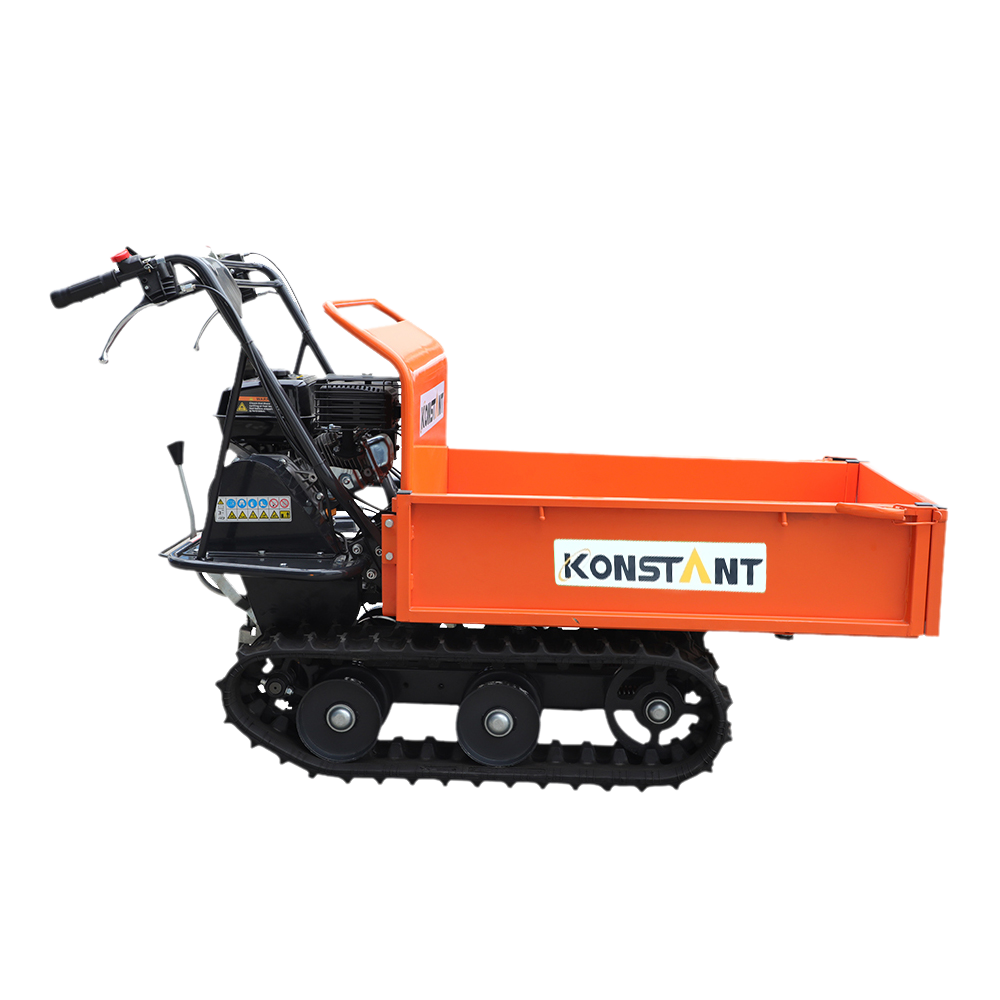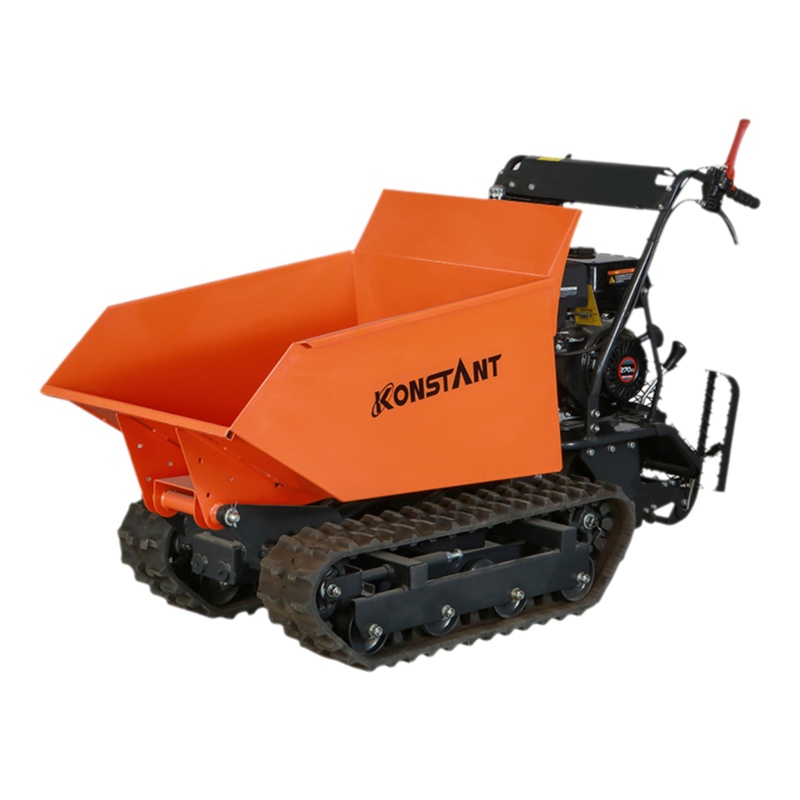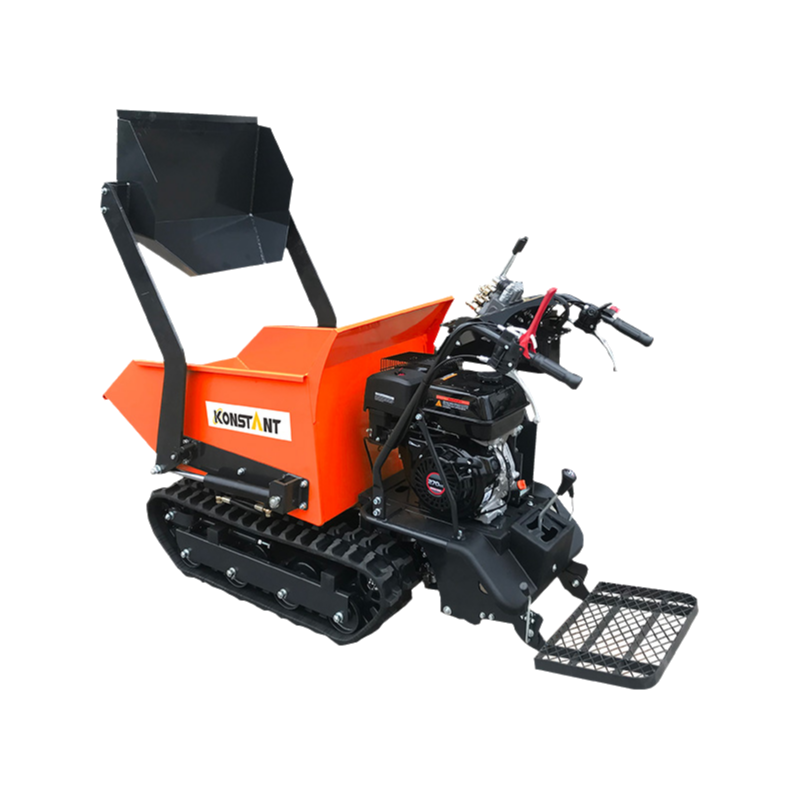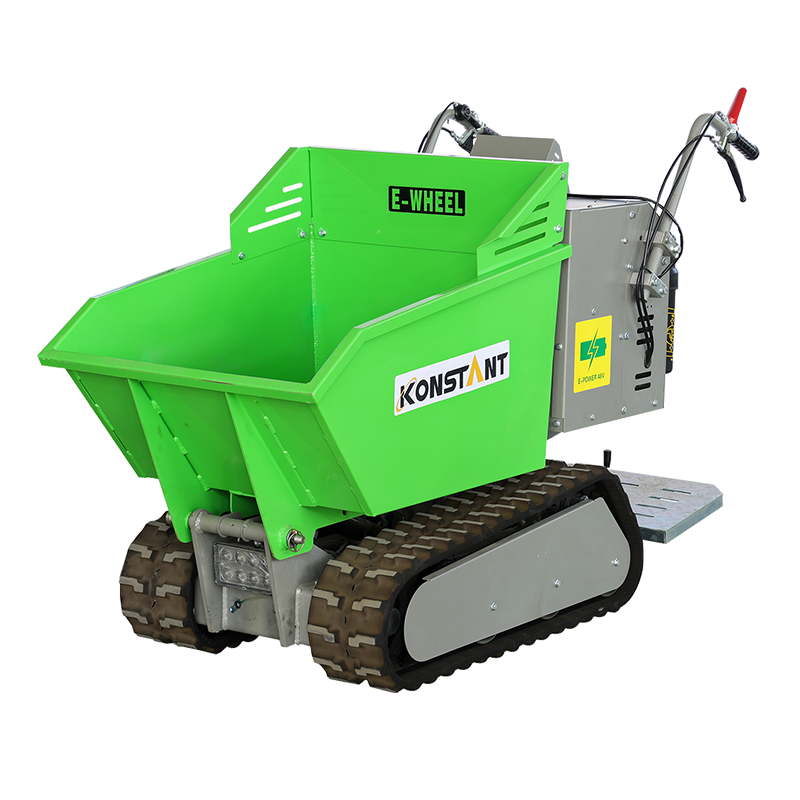Provide you with the latest enterprise and industry news
How Do Electric Garden Loaders Support Sustainable Outdoor Work
Posted by Admin
Comprehensive Guide to Maintaining and Maximizing Your Garden Loader
Garden Loaders have become essential tools for modern landscaping, gardening, and small-scale construction. They offer versatility, efficiency, and adaptability, transforming challenging outdoor tasks into manageable operations. Ensuring the long-term performance and reliability of these machines requires consistent maintenance practices, thoughtful attachment use, and careful operation. By implementing practical routines, operators can extend service life, reduce downtime, and achieve safer, more productive outdoor work.
Routine Cleaning Practices: Keeping Your Loader in Top Condition
Maintaining cleanliness is the toward prolonging a loader's operational life. Garden Loaders are routinely exposed to soil, mulch, leaves, and other debris, which can accumulate and affect mechanical performance. Dirt or plant residues may interfere with moving components, increase wear, or hinder hydraulic efficiency. Cleaning the machine after each use prevents buildup and preserves smooth operation.
For general cleaning, use brushes, air blowers, or gentle rinsing to remove loose dirt. Hard-to-reach areas, including tight joints or hydraulic connections, benefit from compressed air or a light rinse. Ensuring the loader is dry afterward prevents rust and corrosion, keeping all metal surfaces protected. A well-maintained exterior not only enhances appearance but also safeguards the internal systems from environmental damage.
Regular Inspections: Detecting Issues Early
Routine inspections allow operators to identify minor problems before they escalate into costly repairs. Examine tires, wheels, pivot points, hydraulic hoses, joints, and frame structures for early signs of wear, deformation, or corrosion. Keeping a record of inspection findings can help track recurring issues and inform adjustments in maintenance routines.
Paying attention to mechanical connections, bolt tightness, and any unusual noises during operation helps detect potential issues that may otherwise be overlooked. A proactive approach ensures safer use, minimizes downtime, and preserves the loader's efficiency over time.
Lubrication and Moving Parts Care
Hydraulic arms, pivot points, and other movable components require regular lubrication to reduce friction and prevent wear. Using the appropriate type of grease or oil for each part ensures smoother movement and protection against environmental exposure. Over-lubrication should be avoided, as excess grease can attract dust and debris, potentially causing blockages or reducing performance.
Regular lubrication routines not only extend component life but also maintain operational precision, which is especially important when handling delicate landscaping tasks such as planting or leveling soil.
Monitoring Hydraulic and Fluid Levels
Hydraulic fluid, engine oil, and coolant levels are critical for stable operation. Maintaining proper levels ensures consistent performance and prevents overheating or damage to critical components. Routine fluid checks, combined with timely replacement of oils and hydraulic fluids, support smooth operation and long-term reliability.
Using the correct fluids recommended for the loader type enhances efficiency while avoiding unexpected interruptions. Proper fluid management also contributes to cost-effectiveness, as well-maintained systems require fewer major repairs and extend the machine's lifespan.
Tire and Wheel Maintenance
Tires and wheels endure significant stress in outdoor environments, especially on uneven or soft terrain. Checking tire pressure, inspecting for punctures, and monitoring tread wear are essential practices for maintaining stability and traction. Well-maintained wheels reduce slippage, ensure safety, and allow the loader to handle various loads efficiently.
Loaders operating in diverse landscapes, from residential gardens to construction sites, benefit from selecting the correct tire type for each terrain. This attention to detail enhances productivity and reduces physical strain on both the operator and the machine.
Protecting Against Corrosion and Environmental Damage
Exposure to moisture, fertilizers, or chemicals can accelerate rust and corrosion on a loader's metal components. Applying protective coatings, covering exposed parts, and storing the machine in a sheltered area helps mitigate environmental damage. For extended periods of inactivity, indoor storage or weatherproof covers preserve structural integrity and prevent degradation.
These protective measures not only maintain aesthetics but also safeguard critical structural components, ensuring long-term operational reliability. Machines that remain protected are less prone to failure and costly repairs.
Operator Training and Best Practices
Proper operator training is key to help the loader's performance and longevity. Operators should understand load limits, safe handling practices, speed control on slopes, and the correct use of attachments. Consistent adherence to operational guidelines reduces wear on mechanical and hydraulic components while promoting workplace safety.
Periodic refresher training reinforces proper handling habits, especially when new attachments or models are introduced. Trained operators can navigate challenging terrain more efficiently, handle materials safely, and optimize the overall functionality of the loader.
Scheduled Maintenance and Component Replacement
Following a scheduled maintenance program is vital for preventing major breakdowns. This includes checking filters, seals, hydraulic lines, and other consumables. Timely replacement of worn components ensures reliable performance and reduces the likelihood of cascading mechanical failures.
Scheduled maintenance also supports safety. Ensuring that brakes, steering mechanisms, and hydraulic systems are operating correctly reduces the risk of accidents and enhances precision when performing tasks such as leveling soil or lifting heavy materials.
Versatile Attachments to Expand Loader Functionality
Modern Garden Loaders are highly adaptable, with a wide range of compatible attachments that enhance their utility across various outdoor tasks. These attachments allow operators to handle more projects efficiently while reducing manual labor.
Buckets and Scoops
Buckets are frequently used attachments, suitable for moving soil, gravel, mulch, or compost. Adjustable angles provide better control when dumping materials or smoothing surfaces. Having multiple bucket sizes allows operators to manage varying loads effectively.
- Attachment Type – Primary Use – Benefit
- Standard Bucket – Soil, gravel – Efficient transport and dumping
- Light Material Bucket – Mulch, leaves – Reduces spillage, controlled handling
- Grading Bucket – Leveling surfaces – Smooths terrain and minimizes manual work
Forks and Pallet Lifts
Fork attachments assist in transporting heavy items such as potted plants, bricks, or wooden pallets. Adjustable forks accommodate different widths, improving operational flexibility. Pallet lifts are especially useful in small construction sites or garden centers, enabling quick movement of materials.
Hydraulic-Driven Tools
Hydraulic augers, trenchers, and compact plows expand the loader's capabilities for specialized tasks. Augers simplify planting or fence post installation, while trenchers aid irrigation or drainage work. These attachments increase precision, reduce manual effort, and enhance overall productivity.
Snow and Debris Management
Seasonal attachments like snow plows or sweepers extend the loader's functionality throughout the year. They allow quick clearing of snow, leaves, and garden debris, keeping outdoor spaces safe and accessible. A single machine equipped with these tools can handle multiple seasonal tasks efficiently.
Landscaping and Soil Preparation Tools
Landscape rakes, soil tillers, and seed spreaders enable loaders to assist in preparing and maintaining lawns, flower beds, or vegetable plots. These tools reduce physical strain, improve precision, and allow operators to complete tasks over larger areas with minimal effort.
Choosing the Right Attachment
Selecting the appropriate attachment requires understanding project requirements and the loader's capabilities. Consider factors such as load capacity, hydraulic compatibility, terrain conditions, and operator experience. Using attachments according to manufacturer guidelines ensures safe operation and extends the equipment's working life.
Electric Garden Loaders and Sustainable Outdoor Work
Electric Garden Loaders are increasingly popular due to their eco-conscious operation, lower emissions, and quieter performance. These machines are suitable for urban landscaping, residential gardens, and small agricultural applications, supporting environmentally responsible practices.
Advantages of Electric Operation
Electric loaders reduce greenhouse gas emissions and noise pollution, making them ideal for sensitive areas such as residential neighborhoods, public gardens, and parks. Consistent performance without fuel fluctuations enhances efficiency in daily operations.
Energy Efficiency and Cost Management
Electric models often have fewer moving parts than traditional fuel-powered machines. This reduces maintenance requirements while optimizing energy usage. Battery systems are designed to provide extended operational periods with minimal downtime, supporting continuous work without interruptions.
Integration with Smart Systems
Some electric loaders feature integrated sensors and monitoring systems. These provide insights into battery status, component wear, and operating load, allowing operators to plan maintenance proactively and maintain smooth, uninterrupted operation.
Supporting Eco-Friendly Practices
Electric loaders enable operators to implement sustainable landscaping practices. Controlled operation reduces soil compaction, while quiet, low-emission work allows safe use in sensitive areas. These machines make it easier to maintain eco-conscious standards without sacrificing productivity.
Flexible Charging and Operation
Modern battery technology allows loaders to operate for extended periods with shorter charging times. Interchangeable battery systems offer flexibility across multiple job sites, reducing idle time and ensuring continuous workflow.
Garden Loaders have evolved into indispensable tools for landscaping, gardening, and small-scale construction projects. Proper maintenance, strategic use of versatile attachments, and adoption of electric or hybrid models ensure long-term performance, safety, and sustainability.
By implementing consistent cleaning routines, conducting regular inspections, maintaining fluids and lubrication, protecting against environmental damage, and training operators effectively, users can extend the working life of their equipment. Integrating electric loaders further supports eco-conscious practices, while a thoughtful selection of attachments maximizes operational efficiency across tasks.
Maintaining and operating Garden Loaders responsibly enhances productivity, reduces physical strain, and contributes to sustainable outdoor work. These machines remain central to modern landscaping operations, providing reliable, versatile, and environmentally friendly solutions for a wide range of projects.
Content
- 1 Comprehensive Guide to Maintaining and Maximizing Your Garden Loader
- 1.1 Routine Cleaning Practices: Keeping Your Loader in Top Condition
- 1.2 Regular Inspections: Detecting Issues Early
- 1.3 Lubrication and Moving Parts Care
- 1.4 Monitoring Hydraulic and Fluid Levels
- 1.5 Tire and Wheel Maintenance
- 1.6 Protecting Against Corrosion and Environmental Damage
- 1.7 Operator Training and Best Practices
- 1.8 Scheduled Maintenance and Component Replacement
- 1.9 Versatile Attachments to Expand Loader Functionality
- 1.10 Buckets and Scoops
- 1.11 Forks and Pallet Lifts
- 1.12 Hydraulic-Driven Tools
- 1.13 Snow and Debris Management
- 1.14 Landscaping and Soil Preparation Tools
- 1.15 Choosing the Right Attachment
- 1.16 Electric Garden Loaders and Sustainable Outdoor Work
- 1.17 Advantages of Electric Operation
- 1.18 Energy Efficiency and Cost Management
- 1.19 Integration with Smart Systems
- 1.20 Supporting Eco-Friendly Practices
- 1.21 Flexible Charging and Operation

 English
English русский
русский Français
Français Español
Español Deutsch
Deutsch















